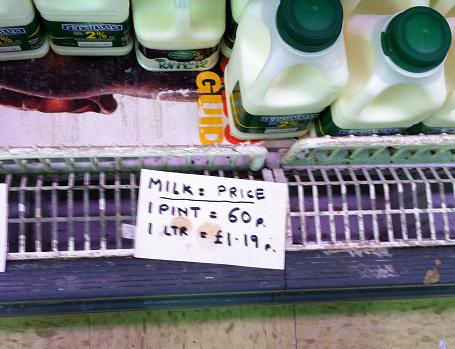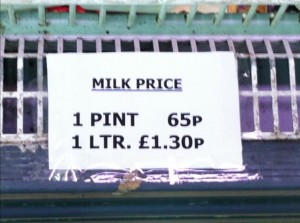Everyone knows – or thinks they know – that prices such as £1.99, £5.99 or £9.99 are optimal price points for retail goods. Customers read the first digit first, and the last two are ignored – or at least, they have much less cognitive impact. In general, consumers were thought to put a subjective value estimate of about ten per cent less on an item priced at £3.99, than one at £4.00.
However, despite a wide literature on behavioural economics and marketing, and a number of papers on pricing (for example this paper from Marco Bertini at London Business School), this effect has not been properly tested for years, since the advent of modern experimental economics methods. Any tests carried out by retailers in previous decades must be treated with caution – not just because they don’t reflect the state of the art, but because the detailed results and methodologies have mostly been kept behind closed doors. The consumer goods industry is understandably reticent to share the results of its investigations. But we successfully persuaded several companies to participate in this new research, albeit anonymously.
And the results were a surprise. At first we thought that the effect we have discovered was just a previously unnoticed artefact, hidden by the fact that no proper experiment has been published before. But after further exploration, we think it is also an effect of changing consumer preferences. As customers become more aware of marketing tactics and more cynical about any communication from companies, their psychology and behaviour inevitably changes.
So, to the results. The summary points are:
- Prices ending in .99 no longer have any advantage in consumer value perception, and do not lead to higher sales.
- The optimal penny value varies by country. In the United States, it is .01. So, instead of $3.99, companies should charge $4.01. In European countries, the optimal price point is different for different product categories, but there is a peak at .04 for many products. So, British or European retailers currently charging, say, £0.99 should increase the price to £1.04.
- By switching in this way to a “dollar-plus” price instead of “dollar-minus”, retailers canincrease sales volume by an average of 8% and increase profit margins by 1-3%(depending on the exact price point)
- Consumers, when presented with the new price point, report an increased level of trust and affinity with the brands of the retailer and manufacturer. We believe this arises from the “honesty signal” that comes from abandoning a discredited and manipulative sales practice.
Retailers in the UK will be particularly relieved to see these results, as a 2% VAT rise earlier this year has been absorbed by most retailers instead of being passed onto consumers, hitting profit margins and affecting economic growth. In fact, we have now discovered, consumers are not just willing, but eager, to pay the additional cost. This is partly because of the credibility effect on the brand, and partly because it brings an associated feeling of civic pride – as consumers are able to self-signal their contribution to reducing the government deficit by paying the additional tax.
Building on this insight, we have extended the traditional economic measure of “willingness-to-pay” and developed a new, psychologically based measure, “eagerness-to-pay”. We argue that these results reflect a genuine consumer preference for a higher price point, and therefore that any increases of this type should not be measured as an inflationary increase, but as a rise in consumer welfare. If adopted across the whole of the UK, this price increase would result in economic growth of approximately 1.6%.
By analogy with the established subfield of psychological research known as “reverse psychology”, we propose that this aspect of consumer behaviour be explored under the banner of “reverse behavioural economics”. We are exploring with UCL and other academic partners the viability of establishing a PhD scholarship in the study of reverse behavioural economics.
A paper, “How brand cynicism can lead to price sarcasm“, coauthored by me, colleagues David Allen Green (@davidallengreen) and Shaa Wasmund (@shaawasmund) has been submitted to the Journal of Behavioural Finance and is expected to be published in about twelve months. Please contact me if you’d like a preprint.
This research is part of a broader programme and we expect to publish more results over the coming months. Early results suggest some intriguing conclusions. First, that TV advertising of brands reduces, not increases, consumer awareness. Second, as the retail distribution of fashion goods becomes broader, their sales volume falls, instead of increasing. And third, the most surprising result of all. The current research indicates that, under some circumstances, the demand curve slopes upwards. Simulated market experiments currently taking place in our lab, as well as examination of Web sales data, suggest that – due to network effects and the concept of “cognitive surplus” – the supply curve may in fact have shifted in the last five years, and now slopes downwards.




